

Every year on February 1st, the town of Kushibiki, just east of Tsuruoka, holds a very well-known Noh theater event called the Kurokawa Noh. The performance has many parts, and it begins around 6pm on February 1st, but doesn't wrap up until the next day around 6pm. One of the teachers at Peter's school, Kazuhisa-sensei, invited us to come with him this year. Peter hopped himself up on aspirin because he had the flu and a bit of a fever, and we set off at 10pm to go see the performance.
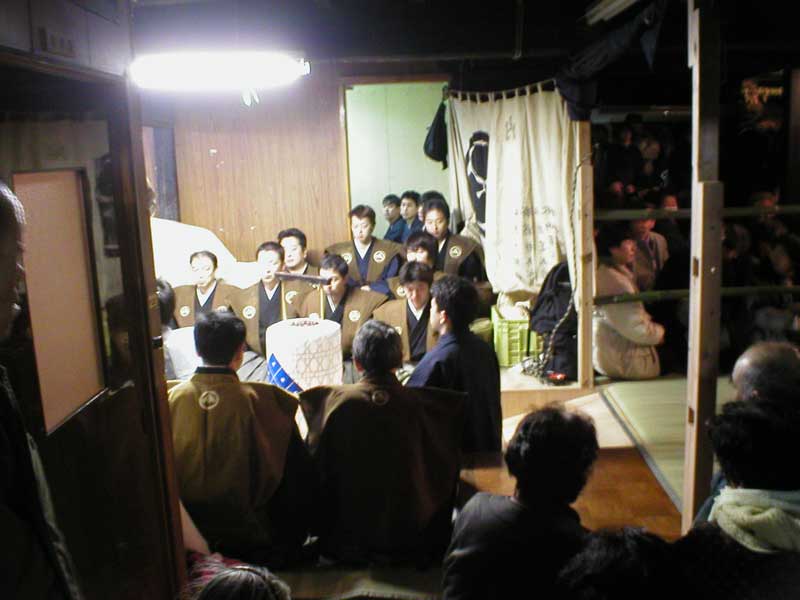
There were two "houses" with Noh for this particular event. One is the upper (ue) house, the other is the lower (shita) house. We started at the upper house. This house was in the true Noh tradition, as the Kurokawa Noh has been held for five hundred years--in the house of a farmer. Apparently, farmers are selected in a cycle once every 40 years or so to host Noh. This has become somewhat of a pain, though, as it requires a lot of modifications to your house. We didn't stay long here because it was actually a bit crowded and we couldn't get a good sitting spot.
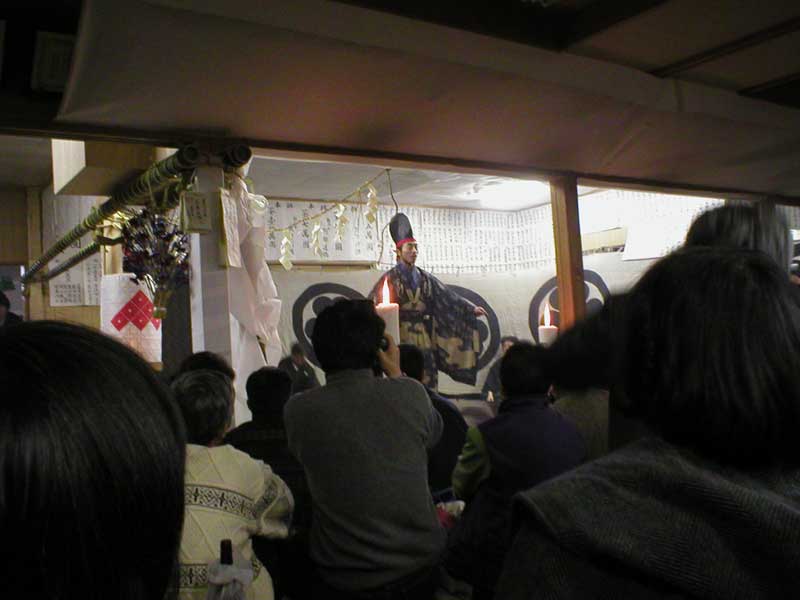
So we went on to the lower house, which wasn't a house at all but a community center. Many Noh performances these days have been moved into community centers from their traditional setting in farm houses because its much easier. The first performance we saw was a short comedy. Kazuhisa-sensei kindly translated into English for us so we knew what was going on. This guy here is a lumberjack.
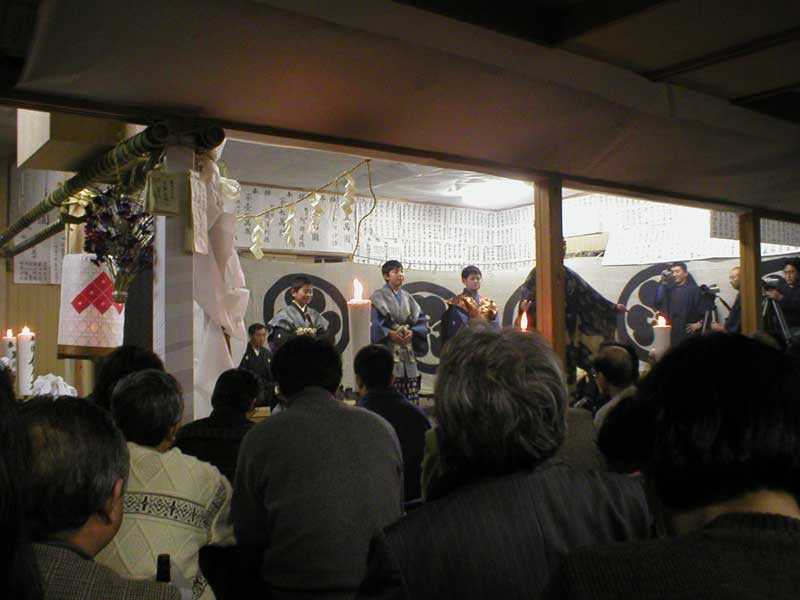
These are his three young apprentices. He assigns them the chore of bringing back three pieces of wood--but each of them must carry two pieces of wood. Heeeeeee?!?
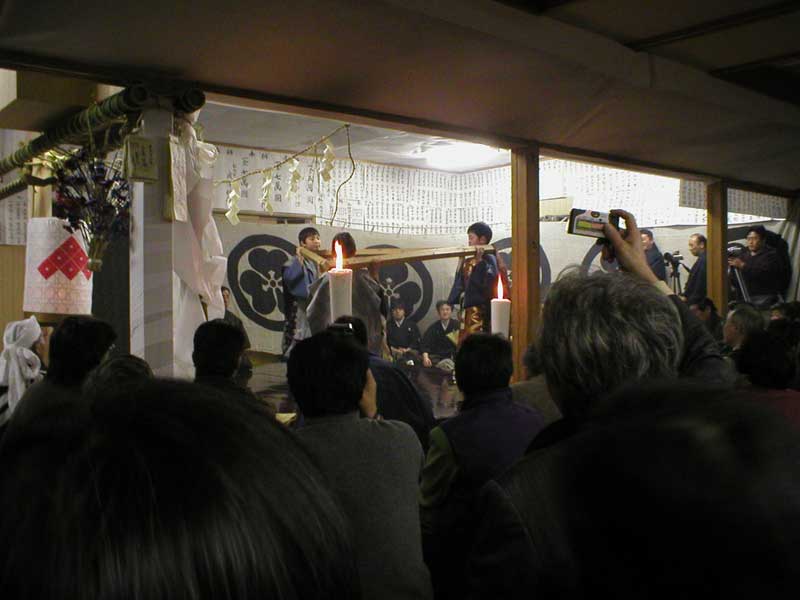
After some buffonary, the riddle is solved. Good work! (Incidentally, it's kind of funny to see all this traditional stuff, and then there are a couple digital video cameras sitting on the stage to the right.)
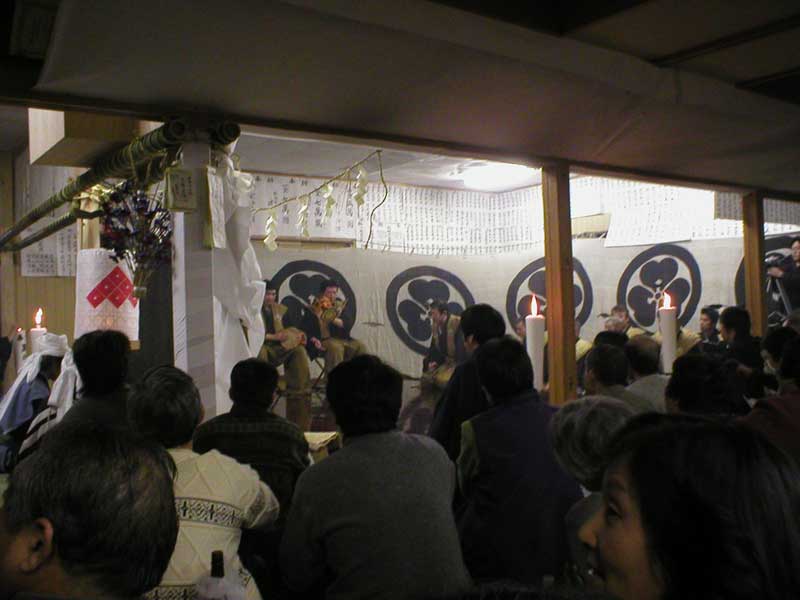
Next came the more serious (and longer) performance. On stage are three musicians all playing traditional instruments. The two in the back are playing drums. The guy to the right plays some type of flute. Noh is all sung, by the way. The language is also very old, so many Japanese people have trouble understanding (sort of like Shakespeare to native English-speakers).
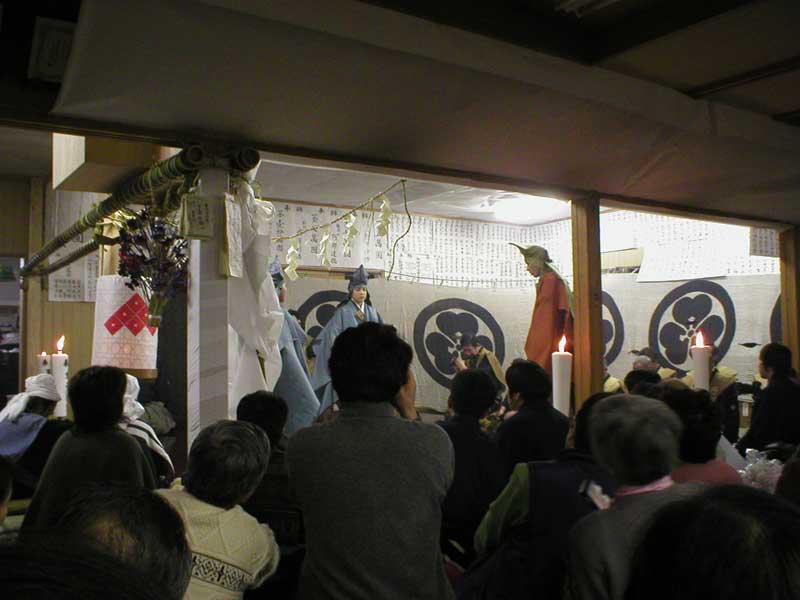
Out comes a priest and two apprentices.
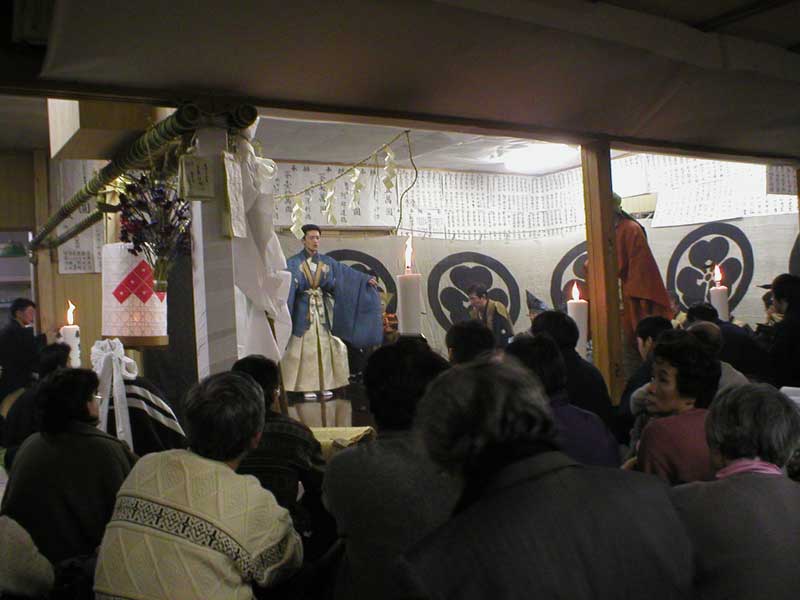
The priest has a dream in which a spirit comes to him and tells him the tale of a young Samurai who died young in battle. After waking up, the priest consults a temple elder who relates the story of the young Samurai. We don't really remember the story, unfortunatley. It involved plum flowers, though.
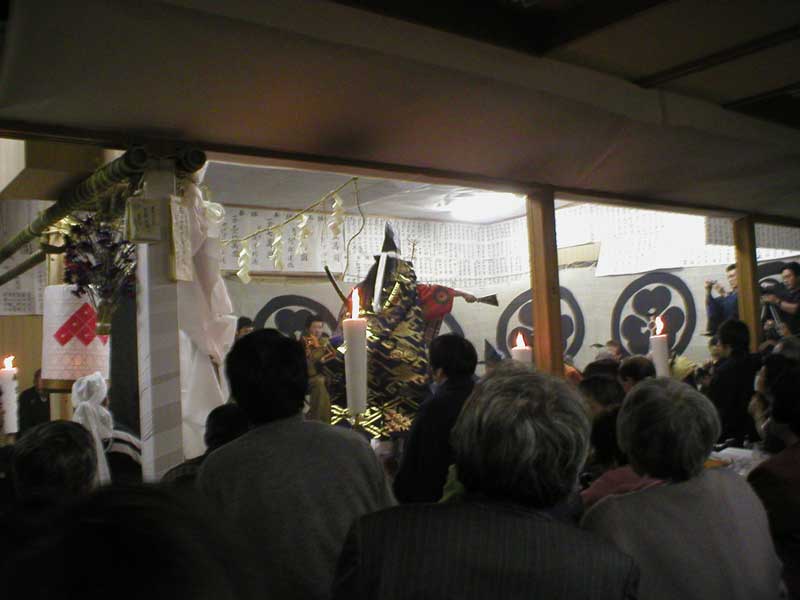
Later, out pops the ghost of the young Samurai in full battle regalia. It was pretty cool.
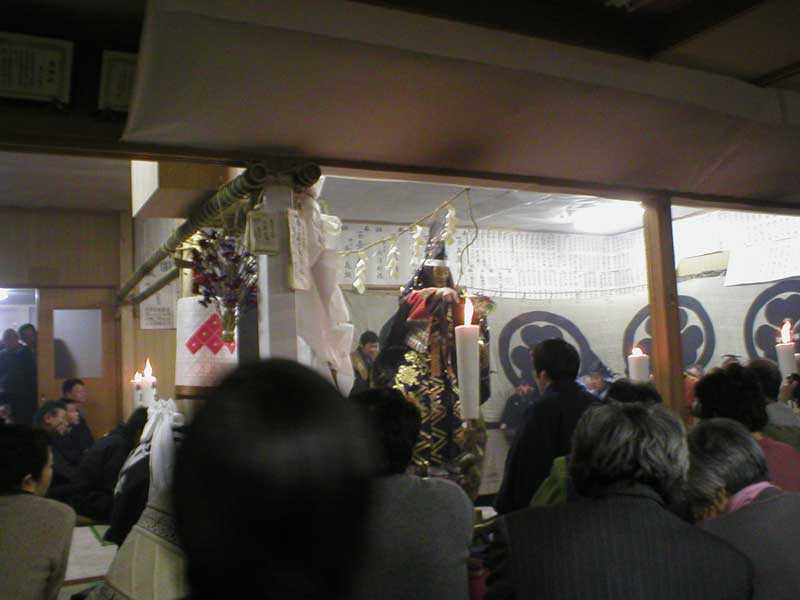
This particular costume involves a mask. Most Noh is done entirely in masks. Kurokawa is unique in that most of the players are not masked. Kazuhisa-sensei told us that a costume like this one could run upwards of three million yen--about $30,000!
We got back home around 1am, and we were quite exhausted the next day... but it was worth it! It actually takes a bit of digging to find things that are traditionally Japanese. In embracing Westernization, some Japanese customs have been buried, unfortunately. It was a huge treat to see this performance, and we hope we can have many similar experiences.